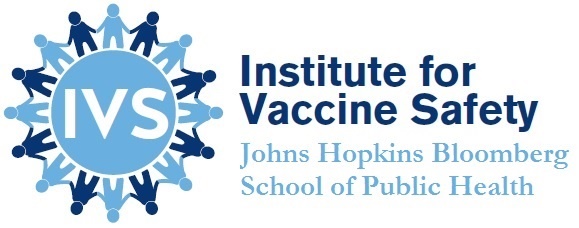Do Vaccines Cause Bell's Palsy?
Conclusion | Epidemiological Evidence | Proposed Biological Mechanism | Archives | References
Conclusion
Natural infections with varicella, tetanus and diphtheria have each been associated with Bell's Palsy. Thus, varicella, tetanus and diphtheria vaccines prevent Bell's Palsy by protecting against these natural infections. Vaccines currently routinely recommended to the general population in the U.S.* have not been shown to cause Bell's Palsy.
Epidemiological Evidence
The only vaccine ever confirmed to cause Bell's Palsy was Berna Biotech's Nasalflu®, an inactivated intranasal influenza vaccine adjuvanted with E. coli heat-labile toxin which is no longer being produced. This vaccine was licensed for the 2000-2001 flu season in Switzerland and then permanently withdrawn from the market upon detection of the Bell's Palsy caused by the vaccine [1]. It was never used in the United States.
The 2012 report by the Institute of Medicine (IOM) [2], now called the National Academy of Medicine (NAM), described two studies with sufficient validity and precision that both reported no association between inactivated influenza vaccine and Bell's Palsy [3, 4]. The report also described one study assessing an association between acellular pertussis vaccination and Bell's Palsy [5]; however, this study did not provide convincing evidence due to a lack of validity and precision [2]. Most studies published since the 2012 IOM report have also reported no association between vaccination and Bell's Palsy [6, 7]; however, one study did find a temporal association between receipt of meningococcal conjugate vaccine concomitantly with other vaccines and Bell's Palsy [8].
Proposed Biological Mechanism
Known causes of Bell's Palsy include infections due to Borrelia burgdorferi, the agent of Lyme disease, and zoster virus in Ramsay-Hunt syndrome. Infections with Clostridium tetani or Corynebacterium diphtheria have been associated with facial nerve palsy as well, albeit very rarely [2]. Although other viral infections such as herpes simplex virus (HSV) and varicella zoster virus (VZV) have also been associated with Bell's Palsy [9-12], the pathogenesis of Bell's Palsy remains poorly understood. Hypotheses include reactivation of latent viral infections in facial nerve ganglia [13] or an autoimmune mechanism possibly with segmental demyelination [14]. Regarding the association of Bell's Palsy with Nasalflu®, an influenza vaccine adjuvanted with E. coli heat-labile toxin, the most likely hypothesis is that the E. coli enterotoxin resulted in inflammation and entrapment of the facial nerve in the facial canal [15, 16].
The IOM concluded that the only mechanistic evidence for an association between Bell's Palsy and tetanus or diphtheria vaccines was knowledge about the natural infection, and that there was no mechanistic evidence for hepatitis A, hepatitis B and influenza vaccines causing Bell's palsy[2].
References
1. Mutsch M, Zhou W, Rhodes P, et al. Use of the inactivated intranasal influenza vaccine and the risk of Bell's palsy in Switzerland. The New England journal of medicine 2004;350:896-903.
2. Institute of Medicine. In: Stratton K, Ford A, Rusch E, Clayton EW, eds. Adverse Effects of Vaccines: Evidence and Causality. Washington (DC): National Academies Press (US); 2012.
3. Greene SK, Kulldorff M, Lewis EM, et al. Near real-time surveillance for influenza vaccine safety: Proof-of-concept in the vaccine safety datalink project. American Journal of Epidemiology 2010;171:177-88.
4. Stowe J, Andrews N, Wise L, Miller E. Bell's palsy and parenteral inactivated influenza vaccine. Hum Vaccin 2006;2:110-2.
5. Yih WK, Nordin JD, Kulldorff M, et al. An assessment of the safety of adolescent and adult tetanus-diphtheria-acellular pertussis (Tdap) vaccine, using active surveillance for adverse events in the Vaccine Safety Datalink. Vaccine 2009;27:4257-62.
6. Lee GM, Greene SK, Weintraub ES, et al. H1N1 and seasonal influenza vaccine safety in the vaccine safety datalink project. Am J Prev Med 2011;41:121-8.
7. Rowhani-Rahbar A, Klein NP, Lewis N, et al. Immunization and Bell's palsy in children: a case-centered analysis. Am J Epidemiol 2012;175:878-85.
8. Tseng HF, Sy LS, Ackerson BK, et al. Safety of Quadrivalent Meningococcal Conjugate Vaccine in 11- to 21-Year-Olds. Pediatrics 2017;139.
9. Ravin LC. Facial paralysis as a complication of chickenpox. American journal of ophthalmology 1961;52:723-4.
10. Peitersen E, Caunt AE. The incidence of herpes zoster antibodies in patients with peripheral facial palsy. The Journal of laryngology and otology 1970;84:65-70.
11. Tomita H, Hayakawa W. Varicella-Zoster virus in idiopathic facial palsy. Archives of otolaryngology (Chicago, Ill : 1960) 1972;95:364-8.
12. McCormick DP. Herpes-simplex virus as a cause of Bell's palsy. Lancet 1972;1:937-9.
13. Murakami S, Mizobuchi M, Nakashiro Y, Doi T, Hato N, Yanagihara N. Bell palsy and herpes simplex virus: identification of viral DNA in endoneurial fluid and muscle. Annals of internal medicine 1996;124:27-30.
14. Manos-Pujol M, Nogues J, Ros A, Dicenta M, Mestre M, Buendia E. Etiopathogenesis of Bell's palsy: an immune-mediated theory. European archives of oto-rhino-laryngology : official journal of the European Federation of Oto-Rhino-Laryngological Societies (EUFOS) : affiliated with the German Society for Oto-Rhino-Laryngology - Head and Neck Surgery 1994:S445-6.
15. Halsey NA, Talaat KR, Greenbaum A, et al. The safety of influenza vaccines in children: An Institute for Vaccine Safety white paper. Vaccine 2015;33 Suppl 5:F1-f67.
16. Lewis DJ, Huo Z, Barnett S, et al. Transient facial nerve paralysis (Bell's palsy) following intranasal delivery of a genetically detoxified mutant of Escherichia coli heat labile toxin. PloS one 2009;4:e6999.
